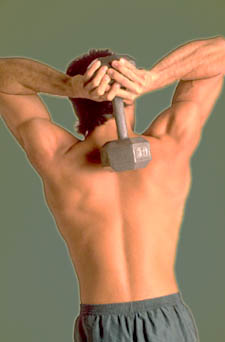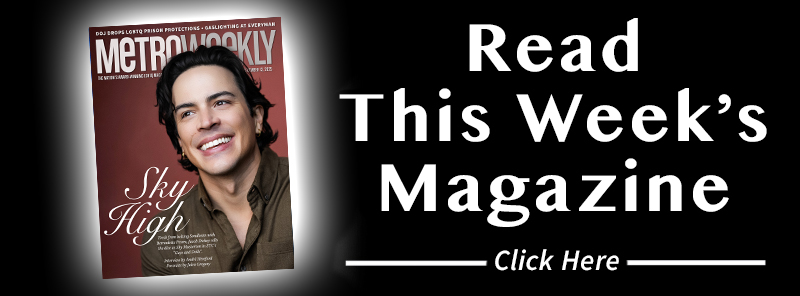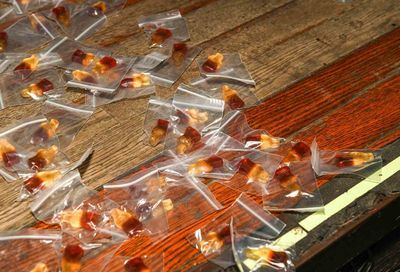The Pain of Gain
Health: What causes exercise pain?
So here it is, time for your mid-week workout. But you’re feeling incredibly sore from that Monday workout — as you contemplate facing the gym with your aching muscles, you can’t help but wonder how you managed to get so sore so long after a workout? And how do you keep it from happening again?
It’s likely your body is experiencing delayed-onset muscle soreness, or DOMS. This phenomenon is relatively common; almost everyone experiences this 24 to 48-hour delay of pain after a strenuous workout at some point in his or her exercise lift. DOMS is different from pain that results during or immediately following a workout. That type of pain typically comes from overtraining, while DOMS typically occurs when you haven’t exercised for some time. Maybe you decided to run several miles after months or years of not running. Or you tried to life your bodyweight after neglecting to touch a dumbbell for months. Or you simply switched to a new machine, tried a new cardio class, or started working with free weights. The result is the same — you’re working muscles that haven’t been worked in a while, and DOMS is the result.
The pain comes from tears in the fibers that make up your muscles, as well as in the connective tissue surrounding the muscles. The tears themselves are microscopic, but the discomfort isn’t. Damage occurs most often during eccentric muscle contractions, when force is exerted by the muscles as they are lengthening, such as running downhill or lowering oneself from a chin-up bar.
 |
These tears are what allow you to build muscle; they occur whenever you perform strength-building exercises. The amount of soreness that you feel as a result is determined by the extent of these micro-tears and the intensity and duration of the exercise.
“It’s a defense mechanism in the body to say, ‘This is too much for me, next time don’t do too much,'” says Dale Buchanan, head trainer at Results the Gym. It’s important to keep the pain in perspective, as well as the level of intensity in your workouts. In a news release from the American College of Sports Medicine, Carol Torgan, Ph.D., FACSM, says, “The soreness is there simply because your muscle is learning something new, and the benefits of exercise far outweigh any initial discomfort.”
Relief from the pain associated with DOMS can come from a variety of sources. Pain generally peaks within 24 to 48 hours of working out and disappears within a week. To make yourself more comfortable, allow your muscles time to heal even as you continue working out. Don’t go right back to the gym with the same workout at the same intensity level — use lighter weights and/or fewer repetitions of the activities that use the sorest muscles. Continuing to work these muscles will help to reinforce the learning the muscles undergo when they experience the micro tears.
Gentle stretching of the sore muscles once you’ve warmed up can help as well. New research indicates that a professional massage received approximately two hours after the workout may reduce the effects of DOMS. Aspirin or ibuprofen may also provide temporary relief from pain.
Once the soreness has subsided, you can resume a more strenuous workout. Buchanan recommends “paying attention to the simple things…nutrition, sleep, and stretching will definitely help.” A combination of complex carbohydrates and proteins immediately following a workout will help the body. “Getting enough quality protein in the next few days,” is important too, notes Buchanan.
Personal fitness trainer Dan White, of Body by Dan, recommends a nitric oxide supplement, which will “help your body to be stronger on a cellular level. Having elevated nitrogen levels helps to counteract the lactic acid,” that can build up in the muscles during workout and cause soreness. Additionally, there is support for taking branch-chain amino acids, such as L-glutamine, to help in the repair of muscle tissue.
But it’s better to prevent the soreness. While micro-tears are a necessary part of increasing strength, excessive pain doesn’t have to be. Properly warm up your muscles before an intense workout. Gradually increase the intensity and duration of your exercise regimen. One recommended principle is the 10 percent rule: Increase the amount of weight you lift by no more than 10 percent per week, run no farther than an additional 10 percent of your typical distance. Introduce change to your workout routine slowly – adding new exercises will increase the likelihood that you will work your muscles in a different way and will experience DOMS.
“Prevention is more of an awareness, keeping things in perspective,” says Buchanan.
|
White notes that “stretching is very important after you work out and the next day” — it will help reduce the amount of lactic acid you hold in your muscles. “The more flexible you are the better off you’ll be,” says White. Additionally, he recommends cardiovascular activity, which will help flush the blood and reduce post-workout soreness. Studies have shown that sodium bicarbonate (one or two tablespoons of baking soda mixed with water) taken approximately an hour before workout can help minimize muscle pain from the workout. White says, “It won’t taste good, but it most definitely will help you.”
So treat your body right, and you’ll be sure to make those mid-week workouts every week.
Support Metro Weekly’s Journalism
These are challenging times for news organizations. And yet it’s crucial we stay active and provide vital resources and information to both our local readers and the world. So won’t you please take a moment and consider supporting Metro Weekly with a membership? For as little as $5 a month, you can help ensure Metro Weekly magazine and MetroWeekly.com remain free, viable resources as we provide the best, most diverse, culturally-resonant LGBTQ coverage in both the D.C. region and around the world. Memberships come with exclusive perks and discounts, your own personal digital delivery of each week’s magazine (and an archive), access to our Member's Lounge when it launches this fall, and exclusive members-only items like Metro Weekly Membership Mugs and Tote Bags! Check out all our membership levels here and please join us today!






















